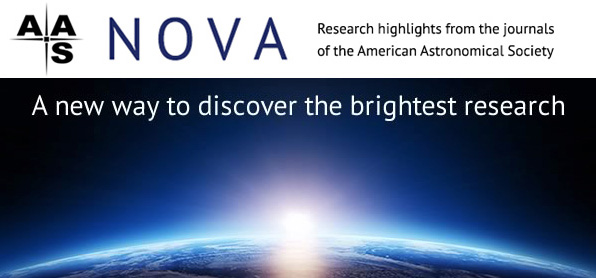Highlights from AAS Nova: 20 May - 9 June 2018

Susanna Kohler American Astronomical Society (AAS)
AAS Nova provides brief highlights of recently published articles from the AAS journals, i.e., The Astronomical Journal (AJ) and The Astrophysical Journal (ApJ), ApJ Letters, and ApJ Supplements. The website's intent is to gain broader exposure for AAS authors and to provide astronomy researchers and enthusiasts with summaries of recent, interesting research across a wide range of astronomical fields.
The following are the AAS Nova highlights from the past two weeks; follow the links to read more, or visit the AAS Nova webpage for more posts.
3–7 June 2018
Astrobites and AAS Nova live-blogged sessions at the summer AAS meeting in Denver, CO. Here are the highlights:
1 June 2018
The Aftermath of GW170817: Neutron Star or Black Hole?
What object was formed in the collision of two neutron stars in August 2017? New X-ray observations may have the answer.
30 May 2018
Mars’s Leaky Atmosphere and Habitability
A new study explores Mars’s evolution from a potentially habitable world to an inhospitable environment.
29 May 2018
A Classic Optics Experiment, in Space, with Asteroids and AGN
Astrobites reports on what we learned from the occultation of an active galactic nucleus by an asteroid.
25 May 2018
A Massive Neutron Star with a Two-Faced Companion
In a recent study, scientists may have identified the most massive neutron star yet — by leveraging observations of its highly irradiated companion.
23 May 2018
Dark Matter in NGC 1052-DF2: A Matter of Debate
Does the galaxy NGC 1052-DF2 really lack dark matter, or is this ultra-faint dwarf just misunderstood?
22 May 2018
Optics to Outrace Them All
Astronomers are using a once-secret technology to scrutinize Kepler stars. Astrobites reports on the implication this has for our observations of exoplanets.
21 May 2018
Bubbles in Titan’s Seas
The frigid seas of Titan, Saturn’s largest moon, host a secret: something is causing features to appear and disappear within them. Could these seas be bubbling?


